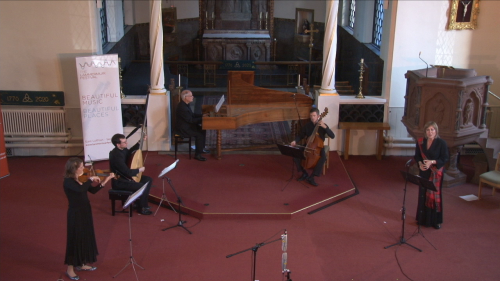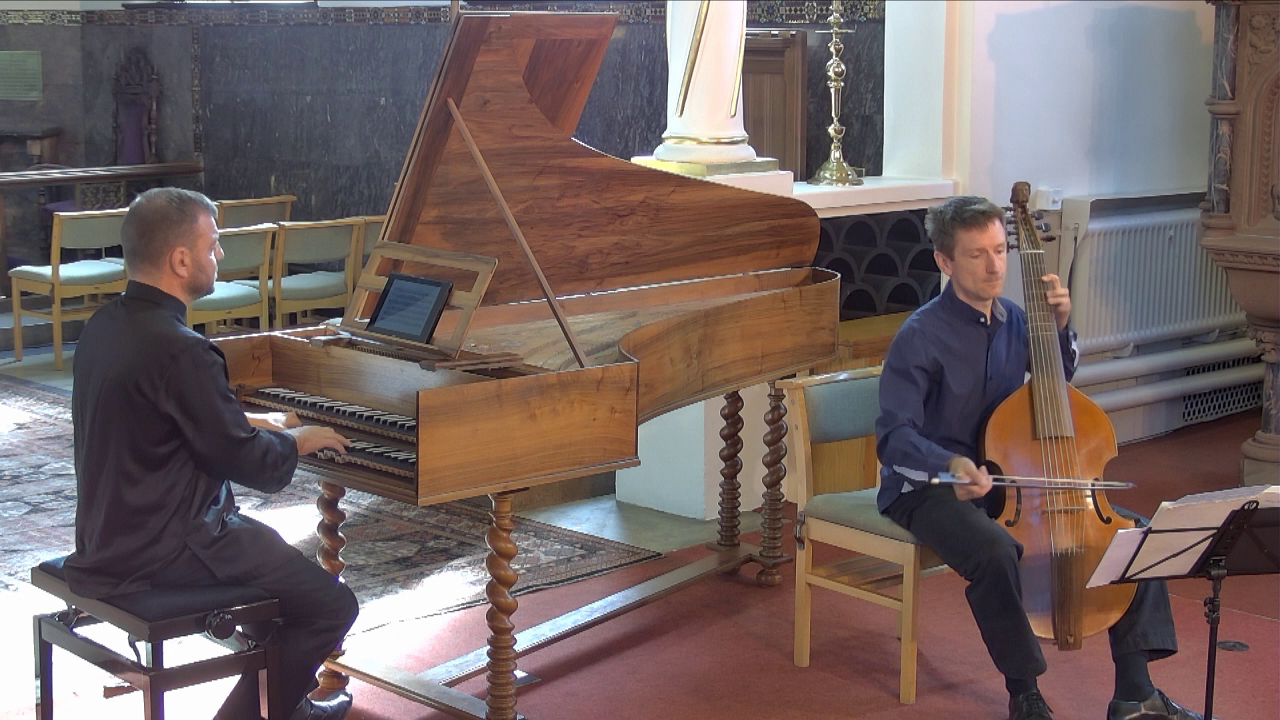
 United Kingdom Lammermuir Festival 2020 [2]: Holy Trinity Church, Haddington, 13-19.9.2020. (SRT)
United Kingdom Lammermuir Festival 2020 [2]: Holy Trinity Church, Haddington, 13-19.9.2020. (SRT)

© Lammermuir Festival
Mozart, Britten – Tom Poster (piano) Navarra Quartet, 13.9.2020
Bach, Marais, Rameau – Jonathan Manson (viola da gamba), Steven Devine (harpsichord), 14.9.2020
Beethoven, Chausson, Enescu, Ysaÿe, Ravel – Coco Tomita (violin), Kan Tomita (piano), 15.9.2020
Marcello, Charlier, Gershwin, Brahms, Montbrun, Pritchard – Matilda Lloyd (trumpet), Martin Cousin (piano), 16.9.2020
Purcell and his contemporaries – Dunedin Consort, John Butt (harpsichord & director), 17.9.2020
Mozart, Beethoven – Members of the Scottish Chamber Orchestra, Roman Rabinovich (piano), 19.9.2020
Week two of Scotland’s Lammermuir Festival has contained an ebullient potpourri of music that has showcased a world of chamber music ranging from soloists performing alone to great concertos. Like week one, it has mostly revolved around performers well known to the festival, who have come back to play for them in these most challenging times. Between them, however, they have made for a memorable week of music-making that repays revisiting.
On the smallest of scales, violinist Coco Tomita – still, amazingly, in her teens! – did a dazzlingly successful job in solo works by Enescu (‘Ménétrier’ from his Impressions of Childhood) and Ysaÿe (the unaccompanied sixth sonata), dashing off some incredible stops, runs and trills like it were all in a day’s work. Joined by her father Kan on the piano, she then gave us a bright, airborne performance of Beethoven’s Spring Sonata that embraces the music’s melodic effusion for what it is, with an airy sense of momentum propelling the music forward, and a Chausson Poème that was fully inside both the passion and the melodrama. Similarly, Matilda Lloyd’s trumpet recital, with Martin Cousin on the piano, ranged from a gleaming Baroque concerto from Marcello, to three of Gershwin’s jazzy preludes, ending on a moving contemporary work in Deborah Pritchard’s Seven Halts on the Somme.

Festival stalwarts the Dunedin Consort played a programme juxtaposing some of Purcell’s ‘songs and ayres’ with music from some of his contemporaries and pointing up the Scottish connection. Dunedin programmes are always inventive affairs, and this one showed not just a creative choice of repertoire, but joy taken in the variety of what was on offer, crowned by Mhairi Lawson’s shining soprano which gave the songs star quality that they probably didn’t have when they were first performed.
The week was bookended by two classical concertos played by chamber ensembles. This was fairly common practice around the turn of the nineteenth century: after all, it was (and is!) a lot easier to get together a string quartet than a full scale orchestra, and if you’re a Rococo aristocrat – or, for that matter, a twenty-first century festival organiser – it provides a way of hearing Mozart’s and Beethoven’s music while dispensing with the larger scale.
At the start of the week, pianist Tom Poster and the Navarra Quartet, fresh from last week’s triumphant Schubert, played Mozart’s A major Piano Concerto No.12, and I thought it worked really well. After all, at this stage in his career Mozart’s use of the orchestra tended towards the miniature, with neither trumpet nor timpani in this concerto, and reducing it to a quartet allowed Mozart’s melodies to sing out all the clearer.
I didn’t enjoy the Beethoven as much, though, his third concerto played by pianist Roman Rabinovich with five string players from the Scottish Chamber Orchestra. Beethoven was writing for a grander scale of ensemble, and you notice the missing winds and brass, their absence leaving a big hole in the texture. You really miss the timpani, whose ominous tread is so important to the work’s sound picture, and no amount of work from a string quintet could mimic that. Furthermore, when the playing was as muscular and assertive as Rabinovich’s, the balance was all wrong, and the piano left the strings in the aural shade more often than not.
Both concerts offered more in their first halves. Before the concerto, Tom Poster played Mozart’s solo B Minor Adagio with introverted thoughtfulness, and the Navarras played Britten’s Third Quartet with a combination of anxious energy and delicate quivering that, perhaps, mirrored the heart condition with which the composer was living when he composed it. Their serene finale seemed to look into the beyond.
Likewise, I loved the SCO players in Mozart’s G minor string quintet. The lean textures and lithe sense of energy sounded great in the church acoustic, and they were also good at tapping into the music’s angst-ridden mood so that even in the finale – never, to my mind, the most convincing move from darkness into light – the music sounds as though it has been hauled unwillingly into the major key, rather than shining with new-found release.
My biggest surprise of the week, however, was a beautiful viola da gamba recital from Jonathan Manson with Steven Devine on the harpsichord. It is not an instrument I have ever devoted much time to getting to know, but this was a revelation. Bach’s three (wonderful) sonatas seem to fit the gamba perfectly, be it in the carolling joy of the second or the quasi-cantabile melodies of the first where the gamba seemed to do an even better job than the cello of mimicking the human voice. With other French baroque acrobatics from Rameau and Marin Marais, this was a well curated programme that brought me more pleasure than I had expected, and left me wanting to find out more, one of the greatest legacies any concert can leave.
Each programme in the festival went out either live or ‘as live’ in one take, so they feel like proper concerts, and both picture and sound work extremely well. Tickets can still be bought for each event, the films of which remain on the festival website for two weeks afterwards.
The Lammermuir team has done the best conceivable job of putting on something resembling a festival in this time where uncertainty seems to be closing in again, and the future for live arts looks more troubled than ever. Whatever happens in the next few months, let’s all hope that this is the only September where the organisers have to put on a Lammermuir Festival that looks like this one.
Simon Thompson
For more about the Lammermuir Festival click here.
